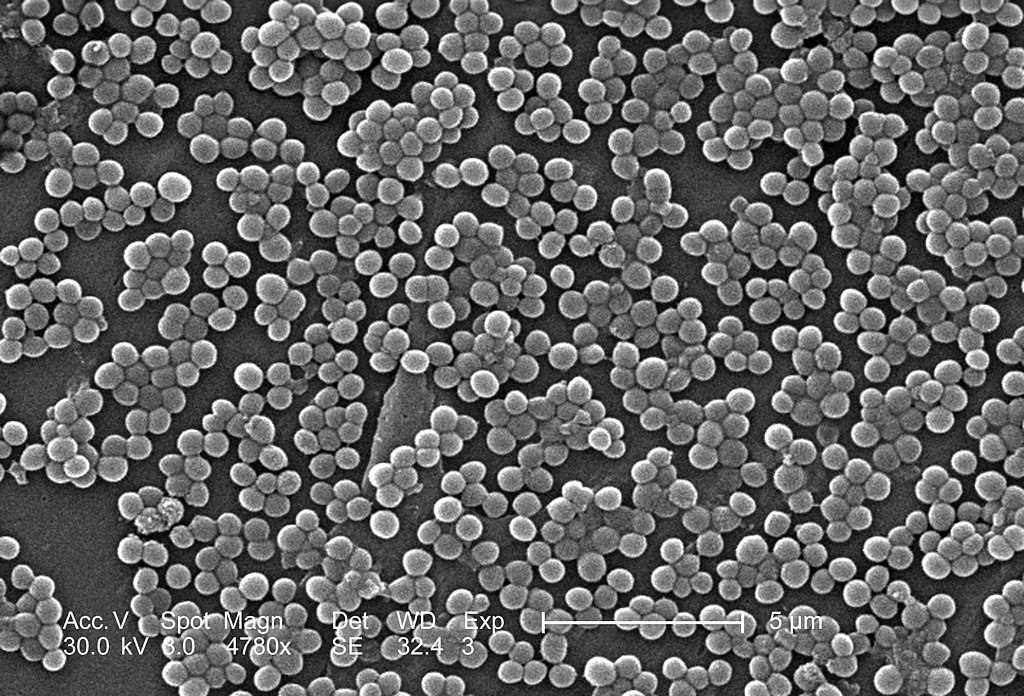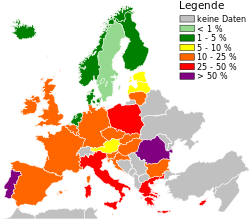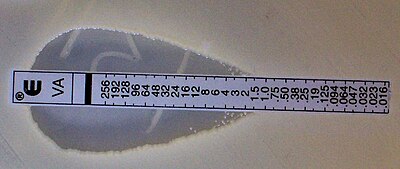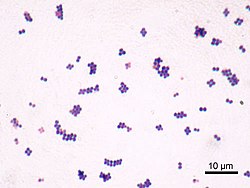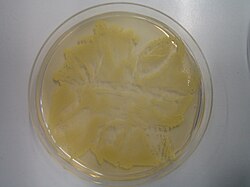MRSA7820
- Content Providers: CDC/ Janice Carr/ Deepak Mandhalapu, M.H.S.
- Methicillin-resistant Staphylococcus aureus infections, e.g., bloodstream, pneumonia, bone infections, occur most frequently among persons in hospitals and healthcare facilities, including nursing homes, and dialysis centers. Those who acquire a MRSA infection usually have a weakened immune system, however, the manifestation of MRSA infections that are acquired by otherwise healthy individuals, who have not been recently hospitalized, or had a medical procedure such as dialysis, or surgery, first began to emerged in the mid- to late-1990's. These infections in the community are usually manifested as minor skin infections such as pimples and boils. Transmission of MRSA has been reported most frequently in certain populations, e.g., children, sports participants, or jail inmates.

|
Dieses Medium stammt aus der Public Health Image Library (PHIL), mit der Identifikationsnummer #7820 der Centers for Disease Control and Prevention. Hinweis: Nicht alle PHIL-Bilder sind gemeinfrei; überprüfe unbedingt den Urheberrechtsstatus und die Nennung der Autoren und Inhaltsanbieter.
|
Relevante Bilder
Relevante Artikel
Staphylococcus aureusStaphylococcus aureus ist ein kugelförmiges, grampositives Bakterium, das häufig in Haufen (Traubenform) angeordnet ist (Haufenkokken). Staphylokokken bewegen sich nicht aktiv und bilden keine Sporen. Die Größe liegt üblicherweise zwischen 0,8 und 1,2 µm. Staphylococcus aureus ist weit verbreitet, kommt in vielen Habitaten vor, lebt meistens als harmloser, beim Menschen zur normalen Besiedlungsflora der Haut und Schleimhaut gehörender Saprobiont und Kommensale, kann aber auch pathogen sein und neben Haut- und Weichgewebsinfektionen auch Lungenentzündung, Hirnhautentzündung, Endokarditis und sogar ein toxisches Schocksyndrom und Sepsis verursachen. Bezüglich ihres Ansprechens auf Antibiotika wurden Staphylokokken in Methicillin-sensible (MSSA) und Methicillin-resistente (MRSA) Stämme eingeteilt. .. weiterlesen
ST8:USA300ST8:USA300 ist ein methicillinresistenter Staphylococcus aureus (MRSA) Typus. Er ist antibiotikaresistent, ansteckend und führt zu schnell fortschreitender, tödlicher Erkrankung mit nekrotischer Lungenentzündung, schwerer Sepsis und nekrotisierender Fasziitis. .. weiterlesen
